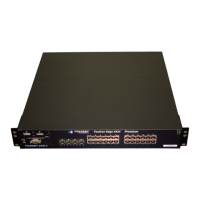December 2005 © Foundry Networks, Inc. 2 - 1
Chapter 2
Getting Familiar with Management Applications
This chapter describes how to manage a Foundry device using the various user interfaces listed in Table 2.1.
Logging on Through the CLI
Once an IP address is assigned to a Foundry device running Layer 2 software or to an interface on the Foundry
device running Layer 3 software, you can access the CLI either through the direct serial connection to the device
or through a local or remote Telnet session.
You can initiate a local Telnet or SNMP connection by attaching a cable to a port and specifying the assigned
management station IP address.
The commands in the CLI are organized into the following levels:
• User EXEC – Lets you display information and perform basic tasks such as pings and traceroutes.
• Privileged EXEC – Lets you use the same commands as those at the User EXEC level plus configuration
commands that do not require saving the changes to the system-config file.
Table 2.1: Chapter Contents
Description See Page
Command Line Interface (CLI) – a text-based interface
accessible through a direct serial connection or a Telnet session.
2-1
Web management interface – A GUI-based management
interface accessible through an HTTP (web browser) connection.
2-8
You can also use the IronView Network Manager, an optional
SNMP-based standalone GUI application, to manage the
Foundry device. See the Foundry IronView Network
Management User’s Guide for information about using IronView
Network Manager.
2-11

